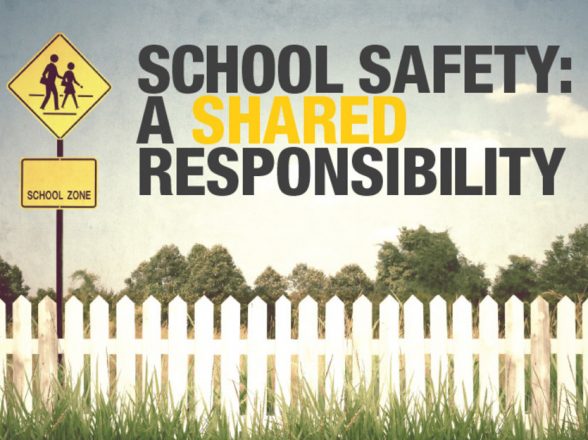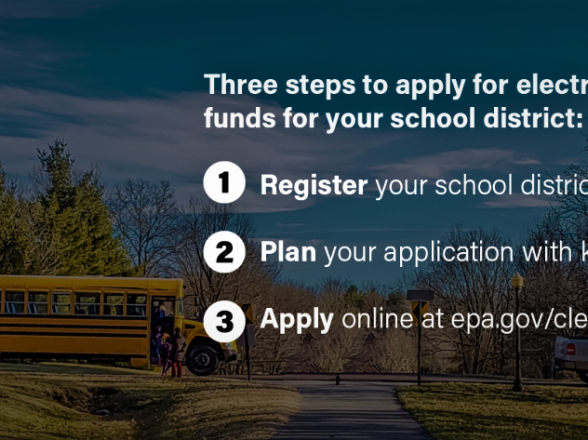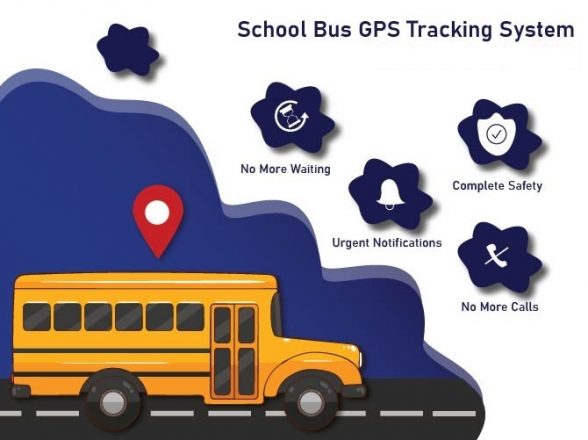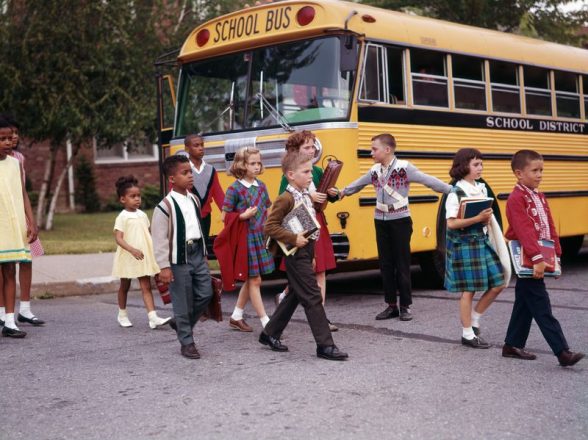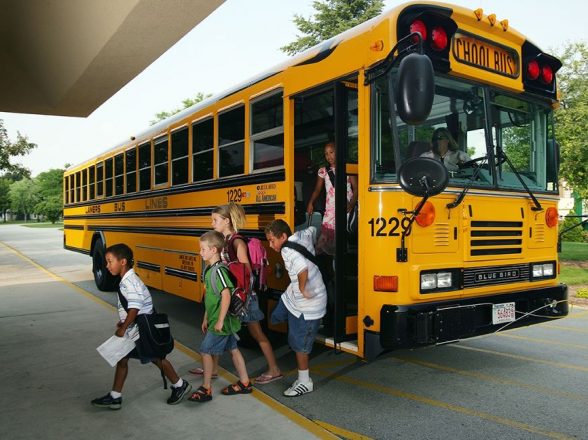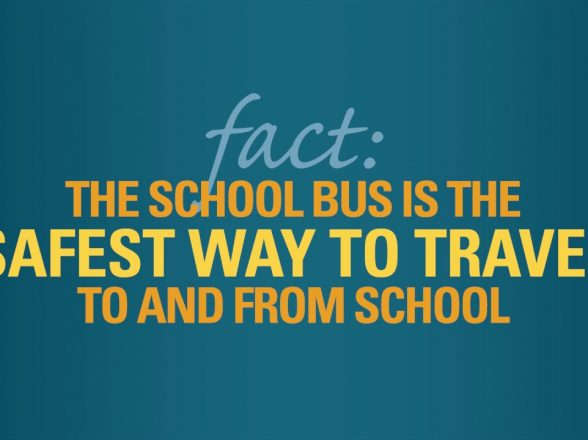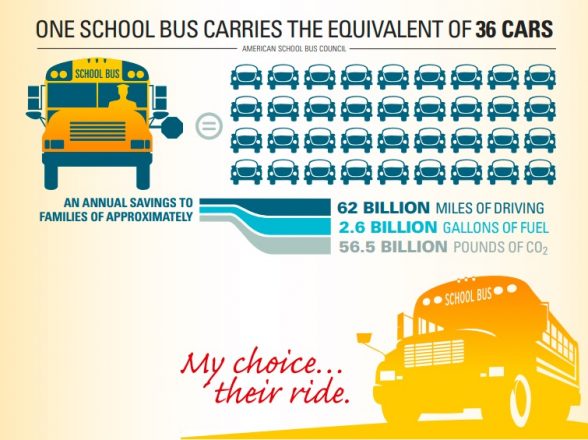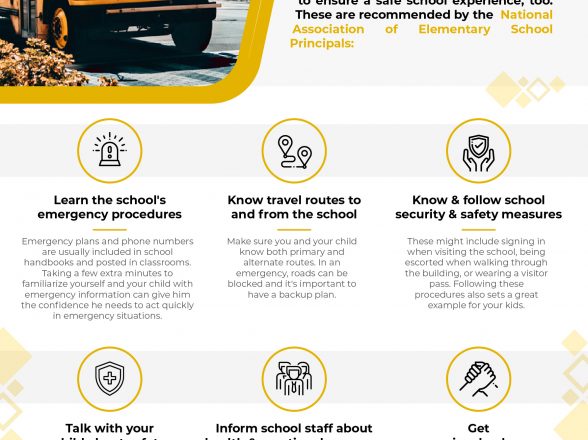May 11, 2021
State Laws for School Bus Stopping

Do you know the laws in your state?
Each state has different laws concerning when it is legal/illegal to pass a stopped school bus. This information has been compiled from Department of Motor Vehicles (DMV) manuals for each state. This is ONLY a guide. Laws are subject to change. If you have ANY questions about the laws/regulations below, contact your local DMV.
State Laws for School Bus Stopping
| STATE | LAW SUMMARIES FROM DRIVERS’ HANDBOOKS |
|---|---|
| Alabama | You must stop when you are following or meeting a school bus or church bus stopped on the road while the stop signal arm is extended and displaying flashing red lights. Remain stopped until the stop signal is retracted and red lights are turned off. You should also stop when meeting or following a school or church bus which is stopped on a four to six lane undivided highway. A stop is not required on a divided highway having four or more lanes which permits at least two lanes of traffic to travel in opposite directions when meeting a school or church bus which is stopped in the opposing roadway or if the school or church bus is stopped in a loading zone which is a part of or adjacent to such highway and where pedestrians are not permitted to cross the roadway. |
| Alaska | Vehicles must stop when red flashing lights are in operation and stop arm is extended. Drivers meeting and following bus must stop. Driver upon a highway with separated roadways providing two or more lanes in each direction need not stop when approaching a school bus which is headed in the opposite direction even though the bus is stopped and the stop arm is extended and the red flashing lights are activated. |
| Arizona | When approaching a school bus that is picking up or dropping off passengers, you must come to a complete stop before reaching the bus, regardless of your direction of travel. A school bus will have alternating flashing lights and a mechanical stop-sign arm extended while passengers are entering or leaving the bus. You must remain stopped until the school bus moves ahead or until the stop-sign arm and flashing lights are no longer shown. You are not required to stop for a school bus on a divided roadway when traveling in the opposite direction. A divided roadway is one in which the road is separated by physical barriers such as a fence, curbing or separation of the pavement. Roadway striping by itself does not constitute a physical separation of the roadway. |
| Arkansas | When approaching a school bus that is stopped and red warning lights on the bus are activated, all approaching vehicles are required to also stop. Regardless of where the driver may be in relation to the bus, whether it’s in the same lane of traffic, opposing lane or at an intersection, traffic must come to a complete stop until the school bus turns off the warning lights and begins to move. Drivers are not required to stop if the school bus is approaching along an opposite lane of travel separated by a median twenty feet or more in width. |
| California | When the bus flashes red lights (located at the top front and back of the bus), you must stop from either direction until the children are safely across the street and the lights stop flashing. |
| Colorado | You must stop your vehicle at least 20 feet before reaching a school bus that is stopped with its red lights flashing whether it is on your side of the road, the opposite side of the road, or at an intersection you are approaching. You must remain stopped until the flashing red lights are no longer operating. Watch carefully for children near the school bus and children crossing the roadway before proceeding. You are not required to stop if the bus is traveling toward you on a roadway that is separated by a median or other physical barrier. |
| Connecticut | You must stop for a school bus that is stopped with its red lights flashing whether it is on your side of the road, the opposite side of the road, or at an intersection you are approaching. You are not required to stop if the bus is traveling towards you and a median or other physical barrier separates the roadway. |
| Delaware | You must always stop before reaching any school bus from either direction when it is stopped to load or unload school children except when you are on the opposite side of a highway having four or more lanes, even then proceed slowly. |
| Florida | On a two way street or highway, all drivers moving in either direction must stop for a stopped school bus which is picking up or dropping off children. You must remain stopped until all children are clear of the roadway and the bus’ stop arm is withdrawn. If the highway is divided by a raised barrier or an unpaved median at least five feet wide, you do not have to stop if you are moving in the opposite direction of the bus. Painted lines or pavement markings are not considered barriers. You must always stop if you are moving in the same direction as the bus and you must remain stopped until the bus stop arm is withdrawn. |
| Georgia | Once the flashing lights have turned red and the stop signs have extended from the side of the bus, it is unlawful for any vehicle to pass the stopped school bus while it is loading or unloading passengers. On a highway divided by a median, cars traveling on the opposite side from the stopped school bus are not required to stop. |
| Hawaii | Whenever a school bus is stopped on a highway with alternating red signal lamps flashing, the driver of any motor vehicle on the same highway in the lane occupied by the school bus and all lanes adjacent to the lane occupied by the school bus shall stop the driver’s vehicle before reaching the school bus and shall not proceed until the school bus resumes motion or the flashing red signal lamps are turned off. However, vehicles proceeding in the opposite direction on a divided highway are not required to stop. A divided highway is two roadways separated by a strip of land or other space not intended for vehicular travel. |
| Idaho | You must stop for a school bus that is loading or unloading students. On a two-lane road, both following and oncoming traffic must stop and remain stopped as long as the red lights near the top of the bus are flashing and/or the stop arm on the left side of the bus is extended. On a highway with two or more lanes going each direction, oncoming traffic is not required to stop when meeting a school bus. |
| Illinois* | You must stop before meeting or overtaking a school bus loading or unloading passengers on a two-lane roadway. You must remain stopped until the stop signal arm is no longer extended and the flashing lights are turned off or the driver signals you to pass. You do not always need to stop when meeting a stopped school bus on a roadway with four or more lanes or if you are traveling in the opposite direction of the bus, but you should drive cautiously. |
| Indiana | You must stop when you approach a school bus with flashing red lights activated and stop arm extended. If you are driving on a highway that is divided by a barrier or unimproved median, you are required to stop only if you are traveling in the same direction as the school bus. You do not have to stop if you and a school bus are traveling in opposite directions on a road that has more than two lanes and is separated by a median strip not for vehicle travel. |
| Iowa | When you meet an oncoming school bus displaying flashing amber lights, you must slow down to no more than 20 mph and be prepared to stop. If the red lights are flashing or if the stop arm is out, you must come to a complete stop at least 15 feet from the bus. You must remain stopped as long as the red lights flash or the stop arm is out. The only exception to this is where you are approaching the bus from the opposite direction on a road with at least two lanes in each direction. When overtaking a school bus, you may not pass when red or amber warning lights are flashing. |
| Kansas* | You must stop when meeting or overtaking a school bus, church bus or day care bus stopped to pick up or let off children. You must remain stopped until the STOP signal is retracted and the red lights are turned off. Approaching traffic in the opposite roadway of a divided highway shall not be required to stop, even if the school bus has the stop-arm extended and the alternately flashing warning signal lamps on. |
| Kentucky* | When you come to a school or church bus that is stopped on any roadway to load or unload passengers, you must STOP. By law you must remain stopped until all people are clear of the roadway and the bus is in motion. A stop is NOT required when approaching a stopped bus from the opposite direction upon a highway of four or more lanes. |
| Louisiana | You must stop at least thirty feet from a stopped school bus that is loading or unloading children. This is required by law whether you are meeting the bus or traveling behind it. You do not have to stop when the bus is stopped in a loading zone completely off the roadway and where the pedestrians are not allowed to cross the roadway. When a school bus is stopped in opposite lanes on a roadway separated by a ditch, grassy median, elevated concrete barrier or any obstacle that prevents traffic from driving thereon, you are not required to stop. Drivers must stop for a stopped school bus when traveling on four lane or five lane roadways which are not separated by any barriers. When you have stopped, you must not proceed until the bus moves again or the visual warning signals are no longer in use. |
| Maine | It is illegal to pass a stopped school bus with red lights flashing on school property, on any undivided highway or parking area in Maine. If you are approaching a stopped school bus from either direction, with its red lights flashing, you must bring your vehicle to a complete stop in front or rear of the school bus and wait while children are getting on or off the bus. You must not proceed until the bus resumes motion or until signaled by the school bus driver to do so. The operator of a vehicle on a way separated by curbing or other physical barrier need not stop on meeting or passing a school bus if traveling in a lane separated by the barrier from the lane in which that operator is traveling. |
| Maryland | If a school vehicle has stopped on a roadway and is operating the alternately flashing red lights, the driver of any vehicle following or approaching the school vehicle shall: stop at least 20 feet from the rear of the school vehicle, if approaching the school vehicle from its rear; or at least 20 feet from the front of the school vehicle, if approaching the school vehicle from its front. The driver of any vehicle following or approaching the school vehicle may not proceed until the school vehicle resumes motion or the alternately flashing red lights are deactivated. This does not apply to the driver of a vehicle on a physically divided highway. |
| Massachusetts | If a school bus or a school pupil transport vehicle has its lights flashing and a stop sign extended, you must stop. It is the law. It does not matter which side of the road you are traveling on. Remain stopped until the lights stop flashing or the stop sign folds back. The only exception to this law is if a school bus has stopped on the other side of a divided highway with a barrier between travel directions. In this case, you do not have to stop. |
| Michigan | When the red overhead lights are flashing, stop at least 20 feet from the school bus. Remain stopped until the flashing red lights are turned off or the bus resumes its travels. It is not necessary to stop for a school bus stopped on the other side of a divided highway where the road is separated by a barrier, such as a concrete or grass median, island, or other structures that separate the flow of traffic. |
| Minnesota | Flashing red lights warn motorists that the school bus is loading or unloading students. When a school bus is stopped with its red lights flashing and its stop arm extended, you must stop your vehicle at least 20 feet from the bus. Oncoming traffic and motorists approaching the bus from behind may not move until the stop arm is retracted and the red lights are no longer flashing. You are not required to stop for a school bus with its red lights flashing if it is on the opposite side of a separated roadway. |
| Mississippi | You must stop for a school bus, regardless of your direction, whenever the bus is stopped and receiving or discharging children. You may not proceed until all children have safely crossed the street. This rule applies to all highways including four lanes. |
| Missouri | When the school bus is stopped, the alternate flashing red lights and the stop signal arm are activated. Oncoming and following traffic must stop before they reach the bus when these signals are activated. You must stop on a 2-lane road where the vehicles travel in either direction and on a 2-lane road that is a one-way street. You do not need to stop when you are traveling the opposite direction of a school bus on a highway divided by a median where the vehicles traveling one direction are on a totally separate road from the vehicles traveling the opposite direction nor when you are traveling the opposite direction of a school bus on a highway containing four or more lanes of traffic. |
| Montana | Red flashing lights warn drivers to stop before reaching the school bus. Do not proceed until children are off the road and the red lights have been turned off. If you meet a school bus that has stopped on the other side of a divided highway with a median strip, you do not need to stop. |
| Nebraska | When the bus driver opens the bus door, the red stop lights and stop arm activates. Stop and remain stopped until the bus driver retracts the stop arm and deactivates the red warning lights. Stop a reasonable distance from the bus. The only exception occurs when approaching a school bus in the opposite direction on a roadway divided by a median. |
| Nevada* | You are required to stop for school buses displaying a flashing red light signal as they load or unload passengers. You may not attempt to overtake or proceed past the school bus until the bus driver has turned off the flashing red lights. There is an exception to this rule; on divided highways, you need to stop only when you are traveling in the same direction as the school bus. |
| New Hampshire | Whenever you approach a school bus from any direction, which has stopped to pick up or let off passengers while operating its flashing red lights, you must stop your vehicle at least 25 feet from the school bus. The only time you do not have to stop is when you are on the other side of a divided highway. You must stay stopped until the bus has started again or the bus driver stops operating the flashing red lights. |
| New Jersey* | A motorist must stop for a school bus with flashing red lights. State law requires motorists to stop at least 25 feet away if he/she is traveling on a two-lane road or on a multi-lane highway where lanes are only separated by lines or on a privately maintained road. When traveling on a dual-lane highway, a motorist should slow to 10 mph if on the other side of a safety island or raised median. A motorist should only proceed after the bus signals have been turned off, and even then, he/she must watch for children. |
| New Mexico | You must stop for a school bus that is stopped with its red lights flashing whether it is on your side of the road, the opposite side of the road or at an intersection you are approaching. You are not required to stop if the bus is traveling towards you and the roadway is separated by a median or other physical barrier. After the school bus red lights have stopped flashing, watch for children along the side of the road and do not proceed until they have completely left the roadway and it is safe to proceed. |
| New York | When a stopped school bus flashes its red light(s), traffic approaching from either direction, even in front of the school and in school parking lots, must stop before reaching the bus. You should stop at least 20 feet (6 m) away from the bus. This law applies on all roadways in New York State. You must stop for a school bus even if it is on the opposite side of a divided highway. |
| North Carolina | When a school bus displays its mechanical stop signal or flashing red lights to receive or discharge passengers, the driver of any other vehicle approaching the school bus must stop and not attempt to pass the school bus until the mechanical stop signal is withdrawn, the flashing red lights are turned off and the bus has started to move. Divided highway of four lanes or more with a median separation or a center turning lane: When school bus stops for passengers, only traffic following the bus must stop. |
| North Dakota | When a school bus is stopped and flashing its red lights, drivers approaching from both directions must stop. This is because children are being loaded or unloaded. The drivers cannot proceed until the bus begins moving, or the bus driver signals to let vehicles pass, or the red lights are no longer flashing. |
| Ohio | When the bus comes to a complete stop, the amber lights stop flashing and four red lights—two in front and two in back—start flashing while the children enter or leave the bus. In addition, a stop arm with flashing red lights is automatically extended beneath the window on the left side of the bus. If the bus is stopped on a street or road which has fewer than four lanes, all traffic approaching the bus from either direction must stop at least 10 feet from the front or rear of the bus and remain stopped until the bus begins to move or the bus driver signals motorists to proceed. |
| Oklahoma | If you approach a bus with flashing red lights and/or showing a red “STOP” sign, it means that children are getting on or off the bus and you must stop. You don’t have to stop for a school bus when the bus is on a different roadway, or the bus is stopped in a loading zone by a controlled-access highway where pedestrians are not allowed to cross. |
| Oregon | When the red lights begin to flash, this means drivers meeting or overtaking the bus from either direction must stop before reaching the bus. You must remain stopped until the bus driver turns off the flashing red lights. The school bus stop law applies on any roadway with two or more lanes of traffic. There is one exception to the law. If you are on a divided highway with two roads separated by an unpaved median strip or barrier, you must stop only if you are on the same side of the road as the bus. A painted median strip or a center lane used only for left turns does not create two separate roads. Where this situation exists, all lanes of traffic must stop. |
| Pennsylvania | If red lights are flashing on the school bus, the law requires that motorists approaching from either direction come to a full stop and remain stopped until the bus’ red lights no longer flash. This requirement applies not only on public highways but also on private roads and in parking lots. |
| Rhode Island | You must stop for a stopped school bus with flashing lights that is loading or unloading passengers. This is required by law whether you are meeting the bus or traveling behind it under the following conditions: on any two-lane highway, on any four-lane or multi-lane highway when traveling behind a school bus, or when passing a school bus that has red or amber signals flashing. |
| South Carolina* | When the operator of a motor vehicle approaches a school bus on which the red signal lights are flashing, the operator shall bring the vehicle to a complete stop not closer than fifteen feet from the school bus and shall remain stopped until the flashing red signal lights are extinguished. The exception is the operator of a motor vehicle on a highway providing two or more lanes in each direction need not stop when he meets a school bus which is traveling in the opposite direction even though the school bus is stopped and its red signal lights are flashing. |
| South Dakota | When the operator of a motor vehicle approaches a school bus on which the red signal lights are flashing, the operator shall bring the vehicle to a complete stop not closer than fifteen feet from the school bus and shall remain stopped until the flashing red signal lights are extinguished. The exception is the operator of a motor vehicle on a highway providing two or more lanes in each direction need not stop when he meets a school bus which is traveling in the opposite direction even though the school bus is stopped and its red signal lights are flashing. |
| Tennessee | When the red lights are flashing and the stop arm is extended, this indicates that the bus has stopped and that children are now getting on or off the bus. Motorists must stop their cars and wait until the red flashing lights are turned off, the stop arm is withdrawn, and the bus begins moving before they start driving again. When a school bus is stopped at an intersection to load and unload children, drivers from all directions are required to stop until the bus resumes motion. When driving on a highway with separate roadways for traffic in opposite directions, divided by a median space or a barrier not suitable for vehicular traffic, the driver need not stop, but should proceed with caution. |
| Texas | If you approach a school bus from either direction and the bus is displaying alternately flashing red lights, you must stop. Do not pass the school bus until: the school bus has resumed motion, or you are signaled by the driver to proceed, or the red lights are no longer flashing. It isn’t necessary to stop when passing a school bus on a different road or when on a controlled-access highway where the bus is stopped in a loading zone and pedestrians aren’t permitted to cross. |
| Utah | If a school bus is displaying alternating flashing red light signals visible from the front or rear, you shall stop immediately before reaching the bus and may not proceed until the flashing red light signal ceases. If you are traveling on a divided highway having four or more lanes with a median separating the traffic, it is only necessary for the vehicles traveling in both lanes behind the school bus to stop, and not the traffic traveling in the opposite direction. |
| Vermont | Once the red warning lights have been activated, you must stop your vehicle. Remember, even in a school yard, you must not pass a stopped school bus with its alternately flashing red warning lights activated. There are a few exceptions where a stop is not necessary. You do not have to stop on a divided highway if the school bus is traveling in the opposite direction. A concrete barrier may be used to separate traffic from the bus, and you are not required to stop. |
| Virginia | You must stop for stopped school buses with flashing red lights and an extended stop sign when you approach from any direction on a highway, private road or school driveway. Stop and remain stopped until all persons are clear and the bus moves again. You must also stop if the bus is loading or unloading passengers and the signals are not on. You do not have to stop if you are traveling in the opposite direction on a roadway with a median or barrier dividing the road and the bus is on the opposite side of the median or barrier. |
| Washington | You must stop for a school bus that is stopped with its red lights flashing whether it is on your side of the road, the opposite side of the road or at an intersection you are approaching. You are not required to stop for a school bus with red lights flashing when the stopped school bus is traveling in the opposite direction and the roadway: has three or more marked traffic lanes, is separated by a median, or is separated by a physical barrier. After the school bus red lights have stopped flashing, watch for children along the side of the road and do not proceed until they have completely left the roadway. |
| West Virginia | On all undivided highways (without a median), traffic in both directions must stop at least 20 feet from a stopped school bus that has its red lights flashing. You must not pass the bus until the lights are turned off or the bus starts moving. On divided highways (with a median you cannot cross), traffic coming toward a school bus stopped on the other side of the median does not have to stop. You must also stop for a stopped school bus which is receiving or discharging students on school property or private property. |
| Wisconsin | You must stop a minimum of 20’ from a stopped school bus with its red lights flashing. You must stop whether the school bus is on your side of the road, the opposite side of the road or at an intersection that you are approaching. After the school bus red lights have stopped flashing, watch for children along the side of the road. Do not go until they have completely left the roadway. Unless signs say otherwise, you are not required to stop for a school bus if you are driving in the opposite direction on a divided highway. |
| Wyoming | You must stop when meeting or overtaking, from either direction, a stopped school bus with flashing red lights. The driver shall not proceed until the school bus resumes motion or the flashing red lights are no longer activated. When meeting a school bus with activated flashing red lights you may pass, only if there is a physical barrier or separate roadways between your vehicle and the school bus. |
Post Views: 0



